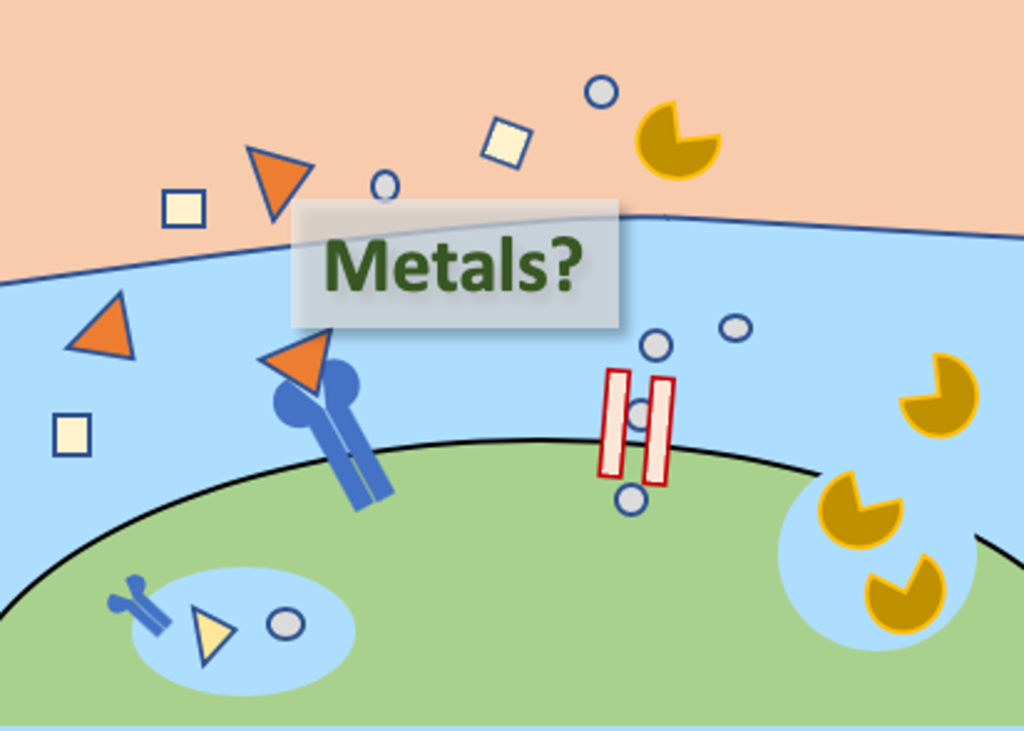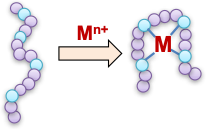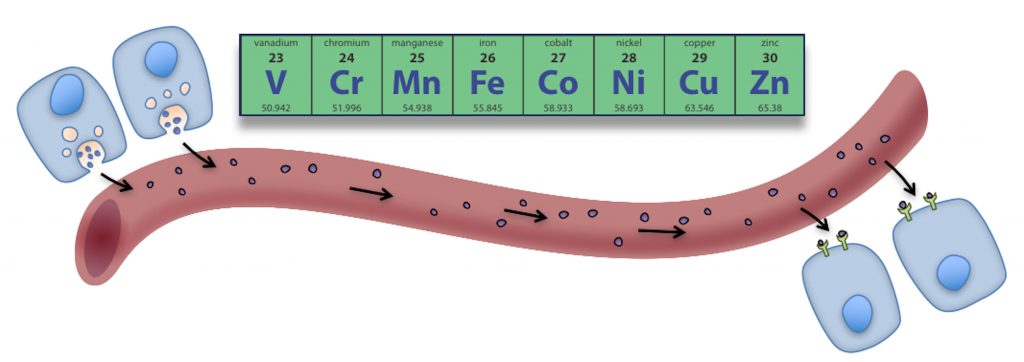
Research in the Heffern Lab sits at the interface of bioinorganic chemistry, analytical chemistry, chemical biology with an overarching objective to investigate, understand, and apply the biochemistry of metals in the extracellular space. Within this larger umbrella, our current milieus of interest are the blood and the interstitial space of mammalian systems as they relate to human health and disease and the soil environment surrounding plant roots with special interest in metabolites associated with plant-biotic interactions.
The specific research projects are classified into the following areas, but many of these projects overlap with one another:
Metalloendocrinology: Interaction of Metal Micronutrients and Hormone Biology
Chemical Biology Tools for Profiling Extracellular Bionorganic Chemistry
Metal Interactions with Plant-Derived Small Molecules
Metalloendocrinology: Interaction of Metal Micronutrients and Hormone Biology


The endocrine system is the body’s messaging system between organs, using chemical messengers known as hormones to control a host of physiological processes. We are seeking to uncover how metals interact with hormones in a research area we’ve coined as “metalloendocrinology.” Tackling these problems will contribute important insight and potential therapeutic solutions to endocrine disorders spanning diabetes, liver disease, and cancer.
Current research focuses on how metals regulate and are regulated by peptide hormones as well as discovering how changes in nutrition affect metal metabolism as they relate to endocrine dysfunction. The major goal of this work seeks to link molecular-level information with whole-organism physiology towards clinically-relevant solutions.
Key publications in this area:
- Review article: Metal-dependent hormone function: the emerging interdisciplinary field of metalloendocrinology. Metallomics, 2019, https://doi.org/10.1039/c8mt00221e
- Analysis of metal effects on C‐peptide structure and internalization. ChemBioChem, 2019, https://doi.org/10.1002/cbic.201900172
- Elucidation of a Copper Binding Site in Proinsulin C-peptide and Its Implications for Metal-Modulated Activity. Inorg. Chem. 2020, https://doi.org/10.1021/acs.inorgchem.0c01212
- Effects of Dietary Glucose and Fructose on Copper, Iron, and Zinc Metabolism Parameters in Humans. Nutrients, 2020, https://doi.org/10.3390/nu12092581
- Fatty Acid Uptake in Liver Hepatocytes Induces Relocalization and Sequestration of Intracellular Copper. Front. Mol. Biosci., 2022, https://doi.org/10.3389/fmolb.2022.863296
Chemical Biology Tools for Profiling Extracellular Bionorganic Chemistry

A major challenge in investigating the dynamics of extracellular metals is in the lack of tools targeted to this milieu. We are developing strategies for detecting and probing metal ions and associated metabolites in the extracellular environment with a focus on distinguishing loosely-bound or “labile” metal pools as well as profiling for potential metal-ion binders towards biomarker discovery.
Specific research in the lab focuses on the development of optical imaging agents targeted to the extracellular space as well as adapting mass-spectrometry-based -omics approaches for identifying potential metal-binders.
Key publications in this area:
- A caged imidazopyrazinone for selective bioluminescence detection of labile extracellular copper(II). Chem. Sci., 2022, 13, https://doi.org/10.1039/D1SC07177G
- Development of an ATP-independent bioluminescent probe for detection of extracellular hydrogen peroxide. Org. Biomol. Chem., 2022, https://doi.org/10.1039/D2OB00436D
- Systematic Evaluation of Copper(II)-Loaded Immobilized Metal Affinity Chromatography for Selective Enrichment of Copper-Binding Species in Human Serum and Plasma. Metallomics, 2022. https://doi.org/10.1093/mtomcs/mfac059
Metal Interactions with Plant-Derived Small Molecules

A number of small molecules have emerged as potential metal-binders. These molecules have become of interest for their health benefit as metal misregulation has come to the forefront as a therapeutic target for cancer, metabolic disorders, and neurodegeneration. Our lab is investigating whether naturally-occurring small molecules with known health benefits achieve their activity by modulating metal homeostasis.
Current research in our lab focuses on how plant-based molecules like polyphenolic flavonoids modulate metal metabolism, both within mammalian systems as therapeutic agents as well as in soil as modulators of plant-biotic interactions.
Key publication in this area: Structure-activity assessment of flavonoids as modulators of copper transport. Front. Chem., 2022. https://doi.org/10.3389/fchem.2022.972198